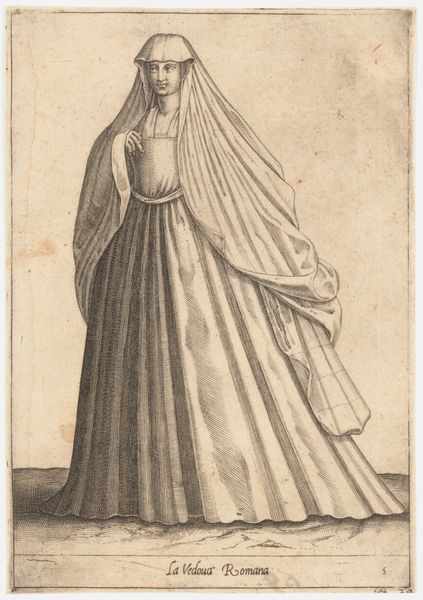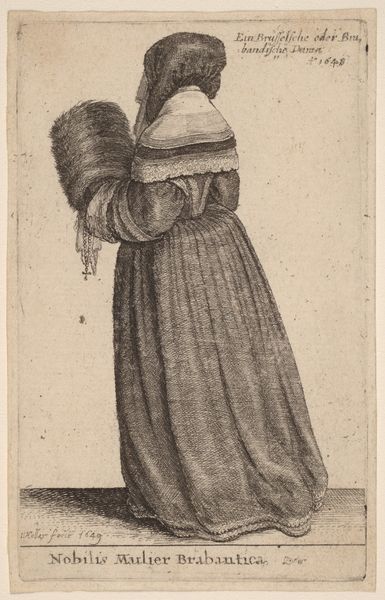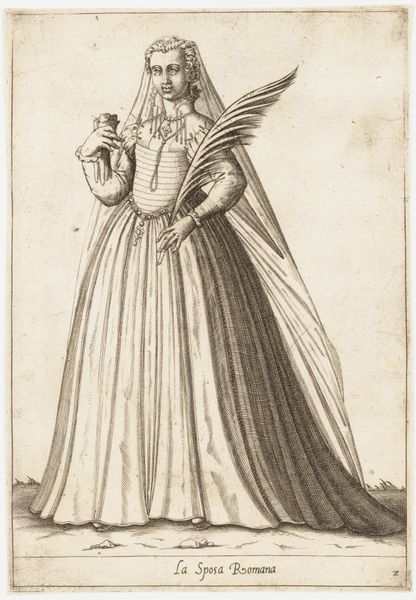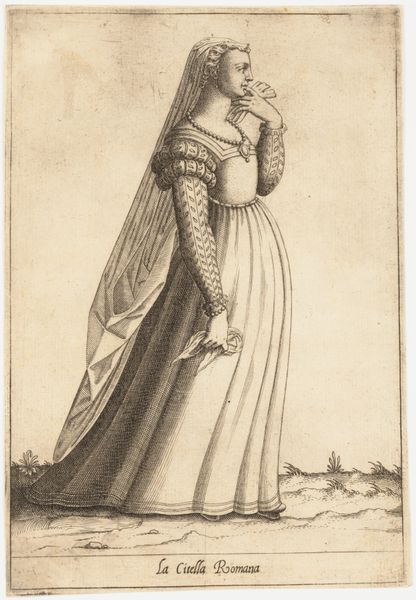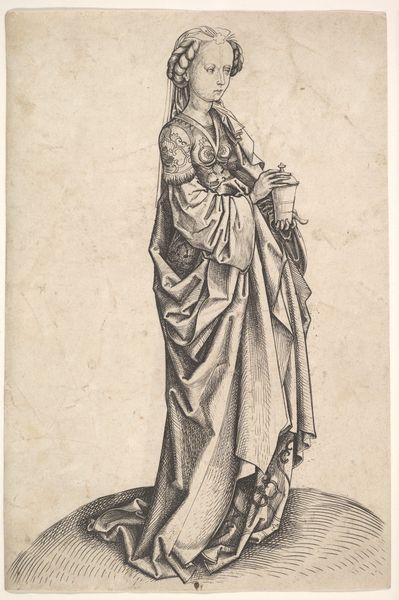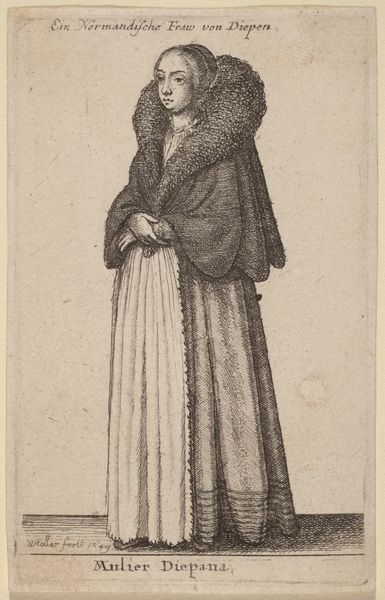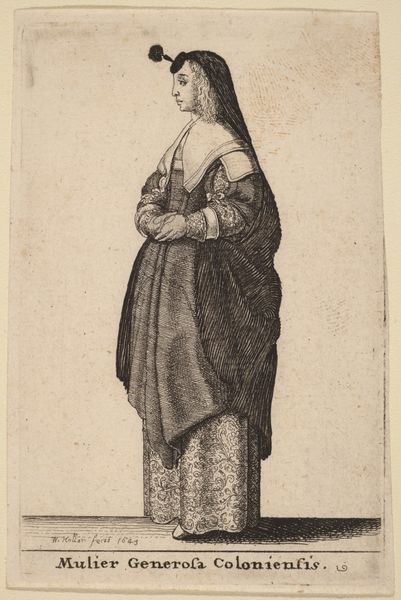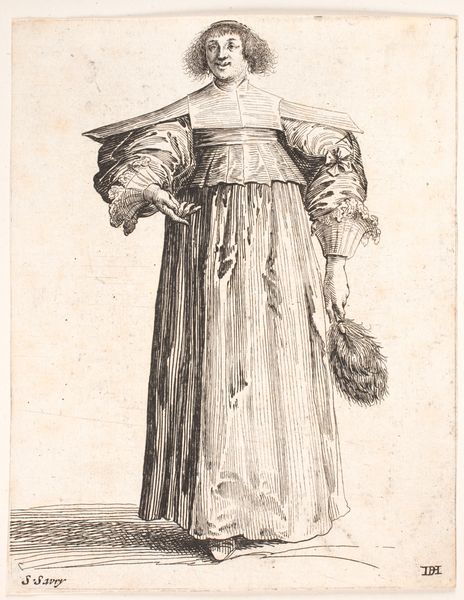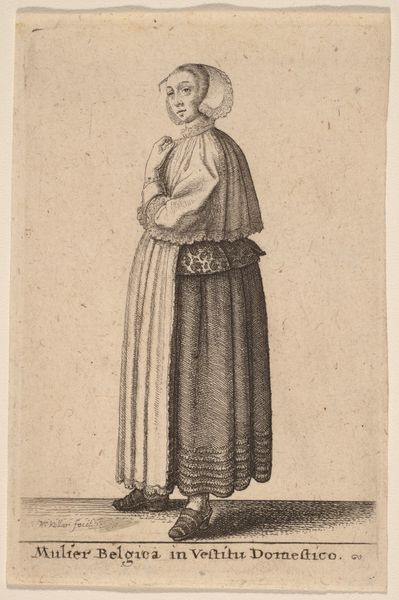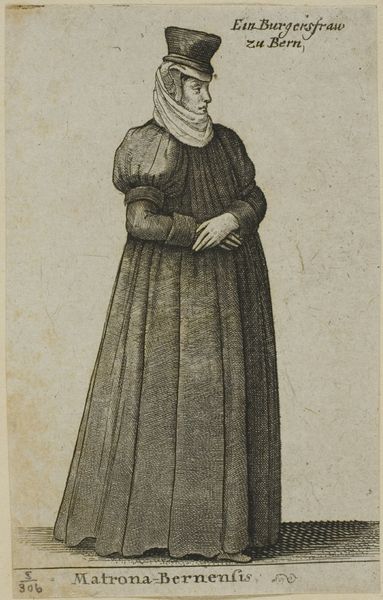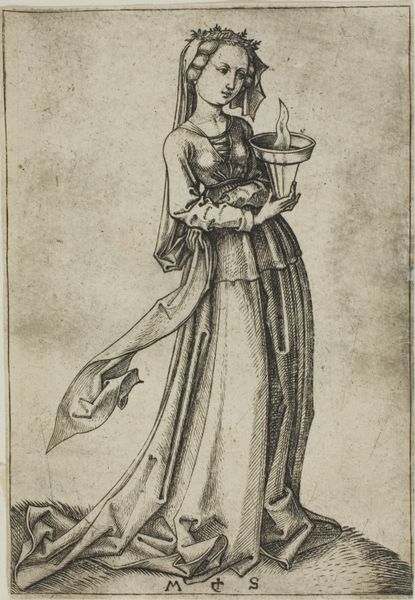
drawing, print, engraving
#
portrait
#
drawing
# print
#
genre-painting
#
italian-renaissance
#
engraving
Dimensions: Sheet: 9 x 6 1/4 in. (22.8 x 15.8 cm)
Copyright: Public Domain
Curator: Pietro Bertelli's engraving, "La Cortigiana de Roma," dating back to somewhere between 1575 and 1585, offers a fascinating glimpse into the genre painting and portraiture styles that defined elements of the Italian Renaissance. Editor: Okay, so first impression: she looks like she's trying to hide, or maybe she's a stylish ghost. That draped fabric is…voluminous! Is that intentional? Curator: Indeed! The piece, residing now at The Met, serves as an invaluable record of the visual language employed around Roman courtesans during this period. It provokes crucial conversations about the construction of identity and the lived realities of women within early modern European society. Editor: I guess so! I see the title written there. La Cortigiana de Roma. She certainly isn’t hiding her title even if she might be hiding in that cloak! Jokes aside, thinking about visibility and societal expectations back then—what message did Bertelli send? Curator: Bertelli cleverly uses dress as both revelation and concealment. It seems that this tension between public display and privacy speaks volumes about the complexities of a courtesan’s position: her social power and precarity, performance, agency, visibility. Editor: Exactly. She’s kind of saying "look but don't touch," you know? Maybe that cloak’s also a sign of self-possession… a way of controlling access. Or maybe a disguise after all. Curator: Thinking about it formally, I'm particularly interested in how the engraving technique—the meticulous hatching and cross-hatching—emphasizes the materiality of the fabric, highlighting textures, adding an air of realism, almost daring the viewer to judge the morality, the place, the social standing of its subject. Editor: Right! The more you see, the less you know, huh? This forces us to think about our assumptions and her individual reality within larger social frameworks and narratives of that period. Not bad, Bertelli! Curator: Absolutely. Thank you for seeing through this with me; I find this piece opens a much-needed critical discourse on art historical convention versus lived female experiences. Editor: Glad we peeled back some layers, literary and sartorial. Always more to uncover.
Comments
No comments
Be the first to comment and join the conversation on the ultimate creative platform.
